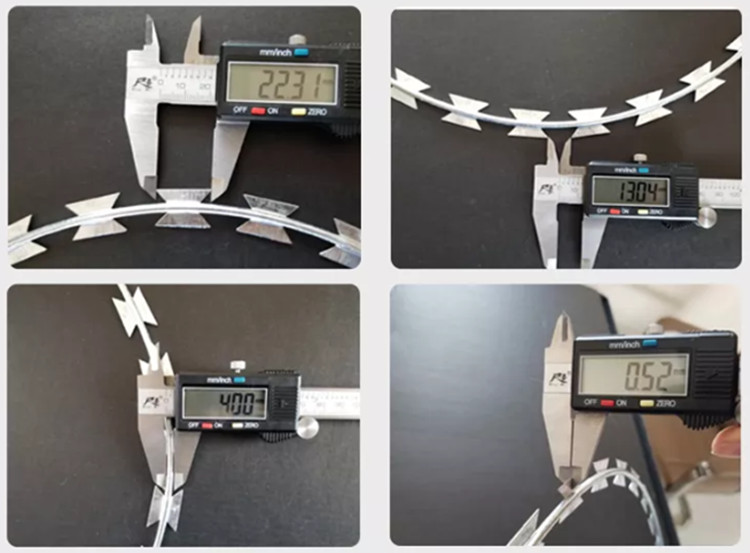Dec . 28, 2024 14:43 Back to list
cattle fence
The Importance of Cattle Fencing Protecting Livestock and Land
Cattle farming is a vital part of agriculture, providing beef and dairy products to millions of consumers around the world. However, keeping cattle safe and secure is a significant challenge for farmers. One of the most effective methods of managing this issue is through proper cattle fencing. In this article, we will explore the importance of cattle fencing, the different types available, and best practices for installation and maintenance.
Why Cattle Fencing Matters
Cattle are inquisitive animals that tend to roam if given the opportunity. This can lead to various problems, including
1. Safety Loose cattle can wander into busy roads, creating hazards for both the animals and drivers. Cattle fencing helps keep livestock safe from accidents.
2. Protection of Crops Cattle can cause significant damage to crops if they escape their designated pasture. Proper fencing helps protect farmer's investments in crops and maintain the integrity of the land.
3. Disease Control Both wild animals and livestock can transmit diseases. A well-constructed fence acts as a barrier to prevent contact between cattle and potentially infected wildlife.
4. Property Boundaries Clear boundaries are essential in cattle farming. Fencing not only keeps cattle contained but also helps avert disputes with neighboring landowners.
Types of Cattle Fencing
There are several types of fencing suitable for cattle, and the choice depends on various factors, including budget, terrain, and the size of the farm. Here are some common types
1. Barbed Wire Fencing This is one of the most traditional options, consisting of multiple strands of wire with barbs. It is cost-effective and provides a reasonable deterrent for cattle. However, barbed wire can be dangerous, as it may injure animals if they become entangled.
2. Electric Fencing Increasingly popular, electric fencing uses a non-lethal electric shock to deter cattle from touching the fence. It is easy to install and can be adjusted according to the level of containment required. Farmers must ensure proper maintenance to guarantee its effectiveness.
cattle fence

3. Wooden Fencing Wooden rail fences are sturdy and visually appealing, providing an aesthetic advantage. However, they require regular maintenance and can be more expensive than other options.
4. High-tensile Wire Fencing This type uses a single or double strand of wire with high tensile strength, which can be as effective as barbed wire but with a lower risk of injury. It is durable and resistant to weather conditions, making it a popular choice.
Best Practices for Installation and Maintenance
Successfully managing cattle fencing requires careful planning and adherence to best practices
1. Site Assessment Before installation, evaluate the land and identify any potential natural obstacles. This will ensure the fence is placed in the most strategic location.
2. Height and Spacing When erecting a fence, ensure it is tall enough (usually at least 5 feet) to prevent cattle from jumping over. Additionally, spacing between the strands should be appropriate to discourage cattle from pushing through.
3. Regular Inspections Regularly inspect the fence for wear and damage, particularly after severe weather. Prompt repairs can prevent costly escapes and potential accidents.
4. Clear Surroundings Keep the area around the fence clear of debris, shrubs, and other obstacles that may entice cattle to push against the fencing.
5. Educate and Train Ensure that all workers on the farm understand the importance of fencing and how to maintain and respect the boundaries set by it.
Conclusion
Cattle fencing is a crucial component for successful cattle farming. It ensures the safety of livestock, protects crops, and maintains property boundaries. By understanding the various options available and implementing best practices for installation and maintenance, farmers can safeguard their investments and promote a healthy farming environment. Investing time and resources into proper cattle fencing not only benefits the livestock but also contributes to the overall sustainability of agricultural practices.
-
Durable Hot-Dip Galvanized Farm Field Wire Fence | Farm Security
NewsAug.01,2025
-
Temporary Fencing Solutions-Anping County Xingzhi Metal Wiremesh Products Co.,Ltd
NewsJul.31,2025
-
Hop Dipped Galvanized / PVC Coated Temporary Fence - Anping County Xingzhi Metal Wiremesh Products Co., Ltd.|Durable Temporary Fencing&Cost-Effective Security Solutions
NewsJul.31,2025
-
Hop Dipped Galvanized / PVC Coated Temporary Fence-Anping County Xingzhi Metal Wiremesh Products Co., Ltd|durable temporary fencing&corrosion-resistant solutions
NewsJul.31,2025
-
Temporary Fencing Solutions - Anping County Xingzhi Metal | Galvanized PVC Coated Fences
NewsJul.31,2025
-
358 Anti-Climb Welded Wire Mesh Fence - High Security, Durable
NewsJul.31,2025



